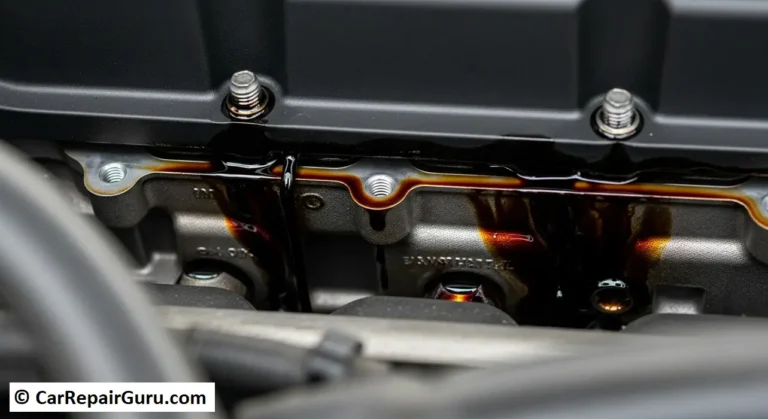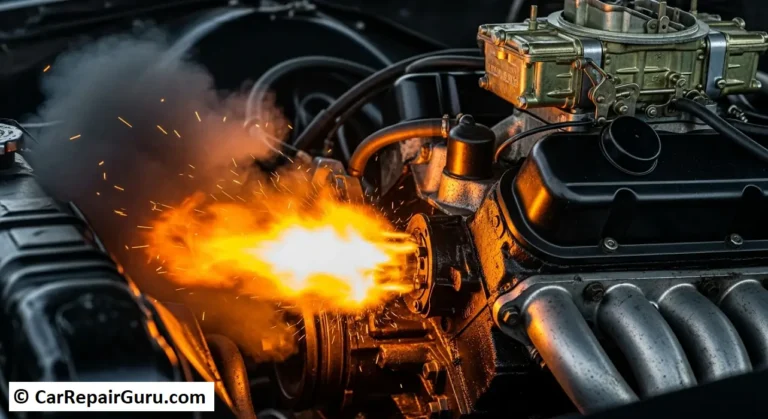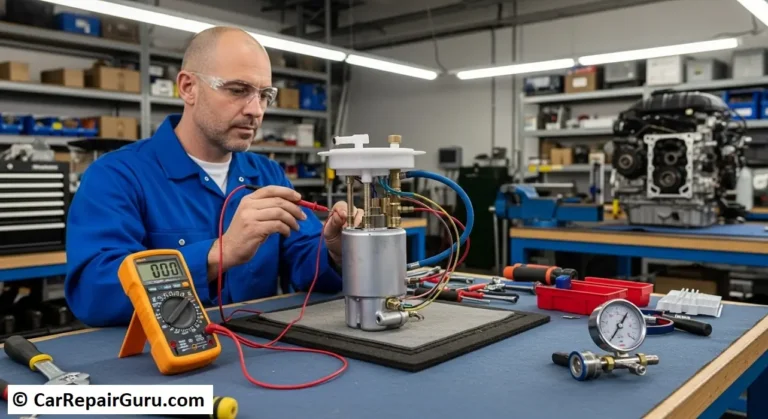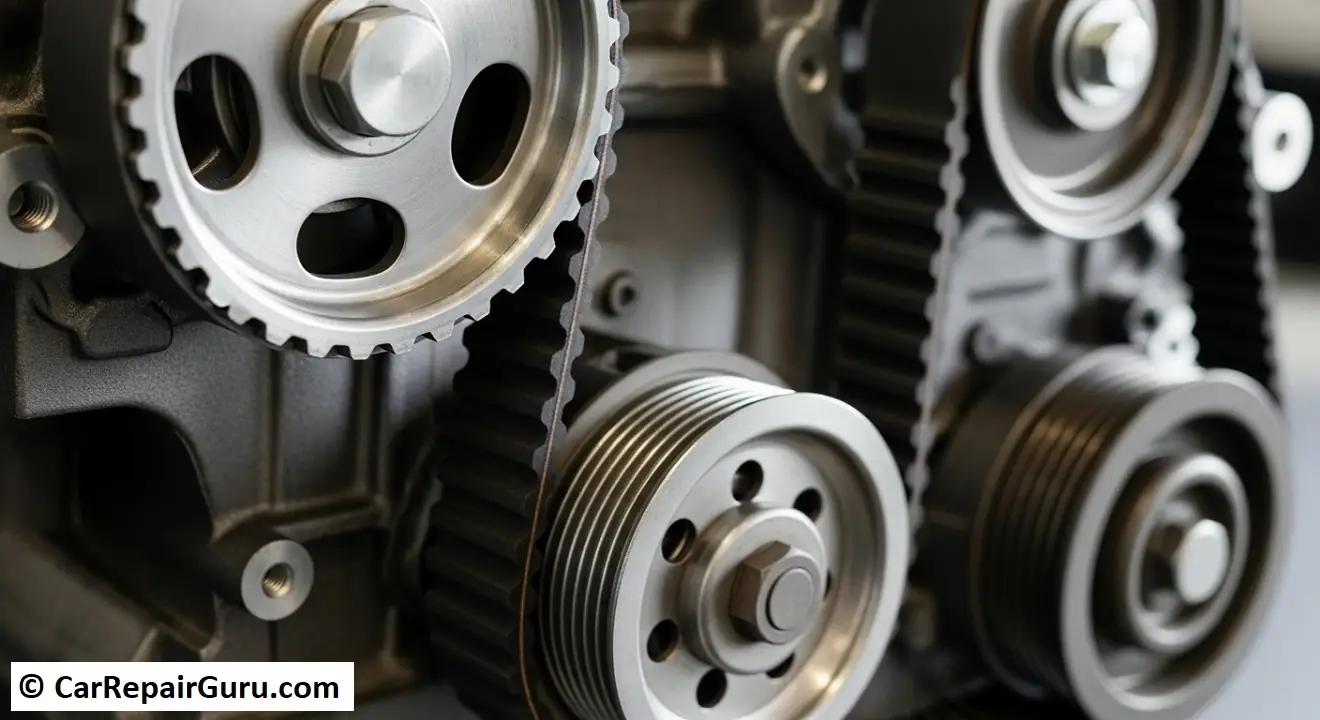
Deep within your vehicle’s engine bay, there is a silent, unseen workhorse responsible for the mechanical heartbeat of your car. It’s not the battery, the alternator, or the pistons, but a humble-looking rubber component: the engine timing belt. While it rarely gets the spotlight, a healthy timing belt is the difference between a smooth, reliable drive and a catastrophic, wallet-draining engine failure.
This guide is your complete resource. We’ll pull back the plastic cover and demystify this critical part. You’ll learn exactly what a timing belt does, the crucial warning signs of a failing belt you must not ignore, what a replacement costs, and why preventative maintenance is one of the smartest investments you can make in your vehicle.
What is an Engine Timing Belt and What Does It Do?
At its core, an engine timing belt is a high-strength, toothed rubber belt that connects the engine’s crankshaft to the camshaft (or camshafts, in many modern engines). Think of it as the conductor of your engine’s mechanical orchestra.
The crankshaft is the component that converts the up-and-down motion of the pistons into the rotational force that ultimately turns your wheels. The camshaft is responsible for opening and closing the engine’s valves. These valves act like tiny doors, letting the air-fuel mixture into the cylinders and letting exhaust gases out.
The timing belt’s one and only job is to ensure this mechanical dance is perfectly synchronized. It forces the crankshaft and camshaft to rotate in perfect harmony, guaranteeing that the valves open and close at the precise millisecond needed for each piston’s stroke.
When a piston moves down on the intake stroke, the timing belt ensures the camshaft has opened the intake valve to let fuel and air in. When the piston moves up to compress that mixture, the belt has made sure both valves are sealed shut. This perfect camshaft and crankshaft synchronization is what allows your engine to generate power efficiently and smoothly.
Without this precise timing, the engine’s performance would be chaotic. The valves might open at the wrong time, or not at all, leading to misfires, poor performance, and eventually, a complete shutdown. In short, what a timing belt does is nothing less than orchestrate the very combustion process that powers your car.
7 Signs of a Bad or Failing Timing Belt (Don’t Ignore These Symptoms!)
A timing belt rarely fails without giving a few warning signs first. Learning to recognize these symptoms can save you from a roadside breakdown and thousands of dollars in engine repairs. If you notice any of the following, it’s time to see a mechanic immediately.
1. A Ticking or Whirring Noise from the Engine
One of the most common bad timing belt symptoms is an unusual noise coming from the front of the engine, where the timing cover is located. This isn’t the normal hum of the motor. Instead, you might hear a persistent, high-pitched whirring or a distinct ticking sound. This timing belt noise can be caused by several issues: the belt itself could be wearing down and vibrating against the cover, or the bearings in the tensioner or idler pulleys (which guide the belt) could be failing.
2. Engine Misfires or Running Rough
The teeth on a timing belt are designed to keep the engine’s timing exact. If the belt becomes stretched, worn, or begins to lose teeth, it can slip on a gear. Even a slip of one or two teeth throws the delicate valve-and-piston synchronization into disarray. This will cause the engine to misfire, run rough, shudder, or feel like it’s struggling to maintain a consistent rhythm.
3. The Engine Won’t Start or Cranks Incorrectly
This is a major red flag. If the timing belt has broken completely, the camshaft will no longer turn when you try to start the car. You might hear the starter motor engage and the crankshaft spin, but since the valves aren’t opening and closing, the engine cannot achieve combustion. It will crank over, but it will never fire up. In some cases, you might hear a distinct “spinning” sound that is faster or different than the normal engine crank.
4. A Noticeable Drop in Oil Pressure
While less common, a drop in oil pressure can be linked to a failing timing belt. In some engine designs, fragments from a shredding timing belt can fall into the oil pan, potentially clogging the oil pump pickup tube. If you see your oil pressure warning light flicker or drop suddenly in conjunction with other symptoms, a failing belt could be the culprit.
5. Oil Leaking from the Front of the Engine
The timing belt is protected by a plastic or metal cover. Behind this cover are the seals for the crankshaft and camshafts. Over time, these seals can wear out and begin to leak oil. Because replacing these seals requires removing the timing belt, they are almost always replaced during a timing belt service. If you notice an oil leak from the front of the motor, it’s a sign that the components in that area are aged and the belt is likely due for service. Leaking oil can also saturate and weaken the belt itself, accelerating its failure.
6. The Check Engine Light Comes On
Your vehicle’s computer relies on sensors to monitor the position of the camshaft and crankshaft. If the timing belt has slipped, the information from these two sensors will no longer match up. The computer will recognize this “correlation error” and trigger the Check Engine Light. A mechanic can pull the codes (such as P0016) to confirm that the engine’s timing is off.
7. Obvious Visual Wear and Tear
If you or your mechanic remove the timing cover for an inspection, the signs of a worn belt are often clear. A healthy belt is smooth with sharp, intact teeth. A failing belt may look glazed or glossy, have visible cracks along its surface, be frayed at the edges, or have entire teeth missing. Any visual sign of degradation means replacement is needed immediately.
What Happens if a Timing Belt Breaks While Driving?

The scenario is every driver’s nightmare: you’re cruising down the highway, and suddenly, your engine shuts off completely. The dashboard lights up like a Christmas tree, you lose power steering, and the brake pedal becomes hard to press. You coast to the shoulder, stranded. This is the immediate and universal result of a timing belt snapping while the engine is running.
But the real drama—the difference between a major inconvenience and a financial catastrophe—is what happens inside the engine in the seconds after the belt breaks. The outcome depends entirely on one critical factor: whether you have an interference or a non-interference engine.
The Critical Distinction – Interference vs. Non-Interference Engines
Interference Engine: The Catastrophic Scenario
The majority of modern cars are built with interference engines to maximize power and efficiency. In this design, the path of the valves (as they open into the cylinder) and the path of the piston (as it travels to the top of the cylinder) intersect, or “interfere” with each other. They are never supposed to be in the same place at the same time, a feat managed by the timing belt.
When the timing belt breaks, this perfect synchronization is instantly lost. The camshaft stops turning, leaving some valves stuck fully open. The crankshaft, however, continues to spin for a few more rotations due to momentum. This forces the pistons upward with tremendous force, smashing them into the open valves.
The broken timing belt damage is immediate and severe:
- Bent Valves: The valves are delicate and will bend easily on impact.
- Damaged Pistons: The tops of the pistons can be cracked, dented, or even punctured.
- Cylinder Head Damage: The force can damage the valve guides or even crack the cylinder head itself.
This is what mechanics refer to as catastrophic engine failure. The repair often involves rebuilding the entire top half of the engine, if not replacing it entirely—a job that can easily cost thousands of dollars.
Non-Interference Engine: Dodging a Bullet
In a non-interference engine, the design provides enough clearance between the valves and pistons. Even if a valve is stuck fully open and a piston travels to the very top of its stroke, there is physically no way for them to collide. If the timing belt breaks, the engine will still shut off and leave you stranded, but the internal components will not be destroyed. The repair will involve installing a new timing belt kit and re-timing the engine, but you will have avoided the ruinous cost of internal engine work.
The crucial takeaway is this: you cannot afford to gamble. If you suspect your timing belt is failing, pull over safely and turn off the engine immediately. A tow truck is always cheaper than a new engine.
Timing Belt Replacement – When and Why?
Unlike changing your oil or replacing a burnt-out headlight, timing belt replacement is not about fixing a problem—it’s about preventing one. This is the definition of preventative maintenance, and adhering to the proper schedule is the single best way to protect your engine’s health and your wallet.
Manufacturer’s Recommended Interval
The most important guide for when to replace a timing belt is your vehicle’s owner’s manual. Every manufacturer provides a specific timing belt replacement interval based on extensive testing. This is typically a range between 60,000 and 100,000 miles.
However, mileage isn’t the only factor. Time is an equally critical enemy of the rubber compounds in the belt. Manufacturers also provide a time-based interval, usually between 7 and 10 years, whichever comes first. A 12-year-old car with only 40,000 miles is still a prime candidate for a timing belt failure due to age-related degradation of the rubber. Ignoring the time interval is a common and costly mistake.
The Importance of a Visual Inspection
If you’ve bought a used car and don’t know its service history, a visual inspection is essential. A mechanic will remove the timing belt cover to assess its condition. They are looking for tell-tale signs of wear that indicate the belt is on borrowed time:
- Cracks: Small fractures on the smooth back or toothed side of the belt.
- Glazing: The belt has a shiny, hardened appearance, indicating it’s old and brittle.
- Fraying: The edges of the belt are starting to come apart.
- Contamination: The belt is soaked in oil or coolant from a nearby leak, which will rapidly degrade the rubber.
Proactive vs. Reactive Maintenance
Replacing your timing belt proactively, based on its recommended schedule, is an investment. You are spending money now to prevent a much larger, more devastating expense later. Waiting for the belt to fail—a reactive approach—guarantees a tow, a much higher repair bill, and potentially the need to replace your entire engine. When it comes to your timing belt, an ounce of prevention is truly worth a pound of cure.
Timing Belt Replacement Cost
Let’s address the question that’s likely on your mind: how much does it cost to replace a timing belt? Because this is a labor-intensive job, it represents one of the more significant maintenance expenses a vehicle owner will face.
On average, a timing belt replacement cost typically falls in the range of $600 to $1,500. For some luxury or high-performance vehicles with complex engine layouts, the cost can exceed $2,000. While that’s a wide range, understanding what you’re paying for can help clarify the estimate you receive from your mechanic.
Cost Breakdown – Parts vs. Labor
Parts: The physical “timing belt kit” itself usually makes up a smaller portion of the total cost, often ranging from $150 to $400 for a quality aftermarket or OEM kit. This includes not just the belt but other critical components (which we’ll detail in the next section).
Labor: This is where the majority of the cost lies. Replacing a timing belt is a complex procedure that requires precision and time. A mechanic must remove numerous components just to access the belt, including engine mounts, accessory drive belts, the harmonic balancer, and various covers. The job can take anywhere from 3 to 8 hours, depending on the vehicle. Labor is the primary driver of the final price.
Factors That Influence the Price
Not all timing belt jobs are created equal. The final bill can vary significantly based on these key factors:
1. Engine Type and Vehicle Model: A simple 4-cylinder engine in an economy car like a Honda Civic is relatively straightforward and will be on the lower end of the cost spectrum. In contrast, a V6 or V8 engine, especially in a tightly packed engine bay (like those in many Audi or Subaru models), requires significantly more labor to disassemble, resulting in a higher cost.
2. Your Mechanic and Location: Labor rates vary dramatically by region. A dealership service center will almost always charge more than a trusted independent repair shop. Getting quotes from a few reputable shops is a smart move.
3. The Scope of the Job: As you’ll see below, mechanics strongly recommend replacing several other parts “while they’re in there.” Opting for a complete kit that includes the water pump, tensioners, and seals will increase the initial parts cost but will save you a fortune in duplicate labor down the road.
What’s Included in a Timing Belt Kit? (Beyond Just the Belt)
When your mechanic gives you a quote, they will almost certainly recommend replacing the entire timing belt kit, not just the belt itself. This isn’t an upsell; it’s a best practice that protects you and your engine. The reason is simple: all the components the timing belt interacts with have a similar lifespan and are subject to the same amount of wear.
Replacing them all at once leverages the fact that the engine is already disassembled. The “shared labor” makes it incredibly cost-effective. Here’s what a comprehensive timing belt kit typically includes:
The Timing Belt: The core component, a brand-new, high-quality reinforced rubber belt.
The Water Pump: In most engine designs, the timing belt drives the water pump. The water pump is a wear-and-tear item with a sealed bearing that will eventually fail. If it fails after your new belt is installed, you have to pay for the entire expensive labor charge all over again just to get to it. This is why a timing belt and water pump replacement is the industry standard.
Belt Tensioner(s): This crucial component maintains the perfect amount of tension on the belt. Most modern tensioners are hydraulic or spring-loaded. If a tensioner fails, the belt can go slack, jump time, and cause the same catastrophic engine damage as a broken belt.
Idler Pulley(s): These are smooth or ribbed pulleys that guide the belt along its path. The bearings inside these pulleys can wear out, causing noise or seizing completely, which would shred the new belt in an instant.
Camshaft and Crankshaft Seals: These small rubber seals prevent oil from leaking out of the front of the engine. Replacing them is a cheap and easy preventative measure once the belt is off, ensuring your new belt isn’t contaminated and ruined by a future oil leak.
Opting for the full kit is the smartest way to ensure another 60,000 to 100,000 miles of trouble-free performance.
Timing Belt vs. Timing Chain – What’s the Difference?
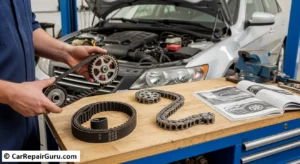
As you research your vehicle, you may hear the terms “timing belt” and “timing chain” used, sometimes interchangeably. While they perform the exact same job—synchronizing the crankshaft and camshaft—they are fundamentally different components with very different maintenance needs. Knowing which one your car has is crucial.
A timing chain is exactly what it sounds like: a metal chain, similar in appearance to a heavy-duty bicycle chain. It is located inside the engine and is lubricated by engine oil. In contrast, a timing belt is a toothed, reinforced rubber belt located outside the engine, protected by a simple plastic or metal cover.
The primary difference for a car owner is lifespan and maintenance. A timing chain is designed to last the life of the engine. While they can stretch or their guides can fail over many miles, they are not considered a regular maintenance item. A timing belt, because it is made of rubber, is a wear item that must be replaced at a set interval.
Here’s a simple breakdown of the key differences:
| Feature | Timing Belt | Timing Chain |
|---|---|---|
| Material | Reinforced Rubber Composite | Hardened Steel Links |
| Location | Outside the engine, behind a cover | Inside the engine, lubricated by oil |
| Lifespan | Requires periodic replacement (60k-100k miles / 7-10 years) | Designed to last the life of the engine; not a routine service item |
| Noise | Very quiet operation | Can produce a rattling noise when worn or if the tensioner fails |
| Maintenance | A scheduled, preventative maintenance expense | Typically no maintenance required, but replacement is very costly if it fails |
So, does my car have a timing belt or a chain? The quickest way to find out is to consult your owner’s manual or do a quick online search for your specific year, make, and model.
Conclusion – Protect Your Engine, Respect the Belt
The engine timing belt is the perfect example of a small part playing a giant role. It works tirelessly in the background, ensuring your engine runs with the power and precision you expect every time you turn the key.
Understanding its function, recognizing the warning signs of failure, and respecting the manufacturer’s replacement schedule are not just technical details—they are the cornerstones of responsible car ownership. Proactive replacement is not an expense to be avoided; it is an investment in your vehicle’s longevity and your own peace of mind.
Don’t leave the health of your engine to chance. Take a moment today to check your owner’s manual for your car’s recommended service interval. If you’re nearing that milestone or experiencing any of the symptoms we’ve discussed, schedule an inspection with a trusted mechanic. Your engine—and your wallet—will thank you for it.
Frequently Asked Questions about Engine Timing Belts
What does a timing belt do?
An engine timing belt synchronizes the rotation of the engine’s crankshaft and camshaft. This ensures the engine’s valves open and close at the perfect time in relation to the pistons, allowing your engine to run smoothly.
What are the signs of a bad timing belt?
The most common signs are a ticking or whirring noise from the engine, rough idling or misfiring, and the engine refusing to start. You may also see the check engine light come on or notice an oil leak from the front of the motor.
How much does a timing belt replacement cost?
A timing belt replacement typically costs between $600 and $1,500. The final price depends heavily on your vehicle’s make and model, as the majority of the cost is for the many hours of labor required for the job.
What happens if a timing belt breaks?
If a timing belt breaks, the engine will instantly shut off. In most modern cars (called “interference” engines), the pistons will then crash into the valves, causing catastrophic and extremely expensive internal engine damage.
When should I replace my timing belt?
You should replace your timing belt based on the manufacturer’s schedule, typically every 60,000 to 100,000 miles or every 7 to 10 years, whichever comes first. Always check your vehicle’s owner’s manual for the exact interval.

